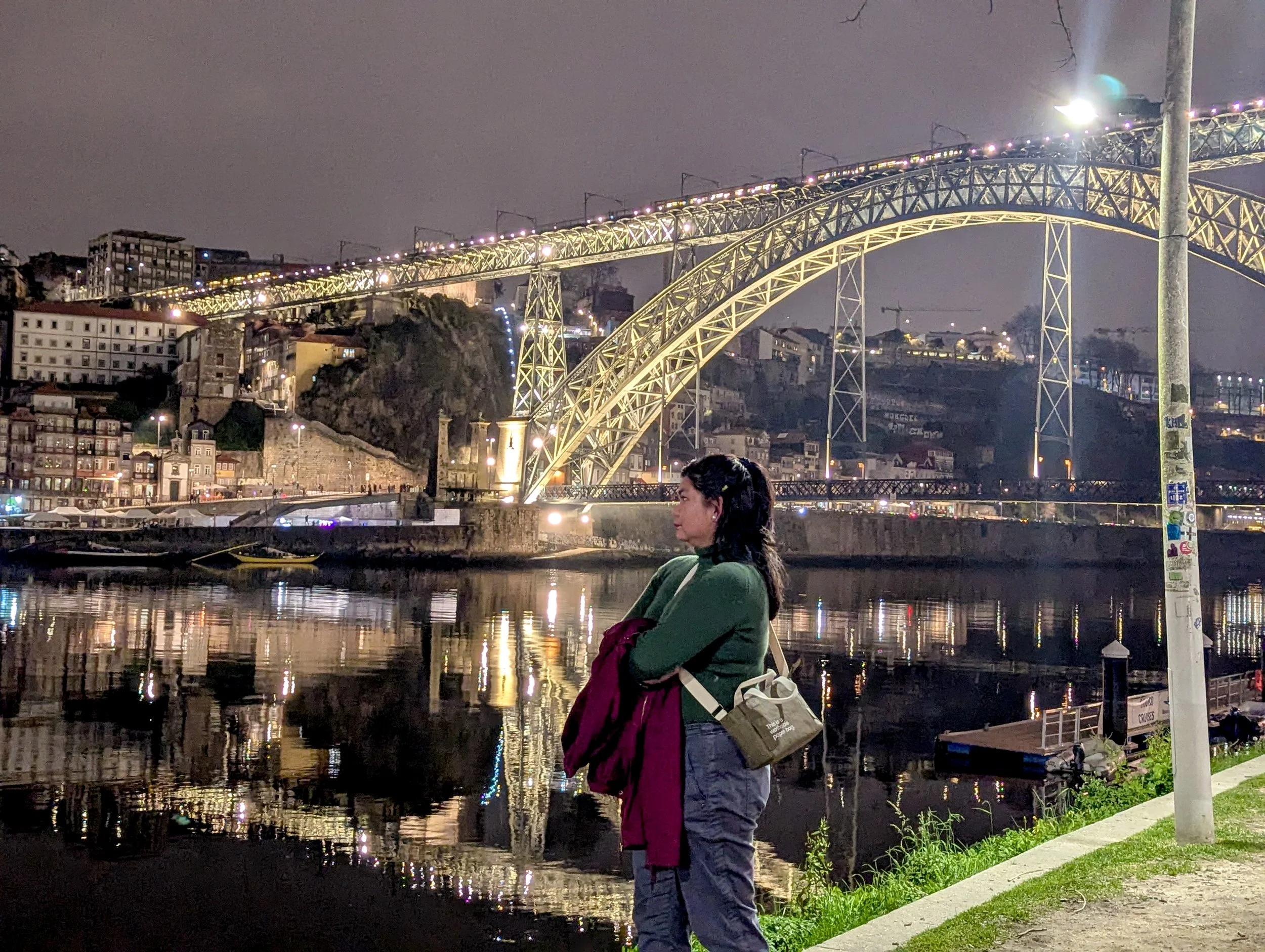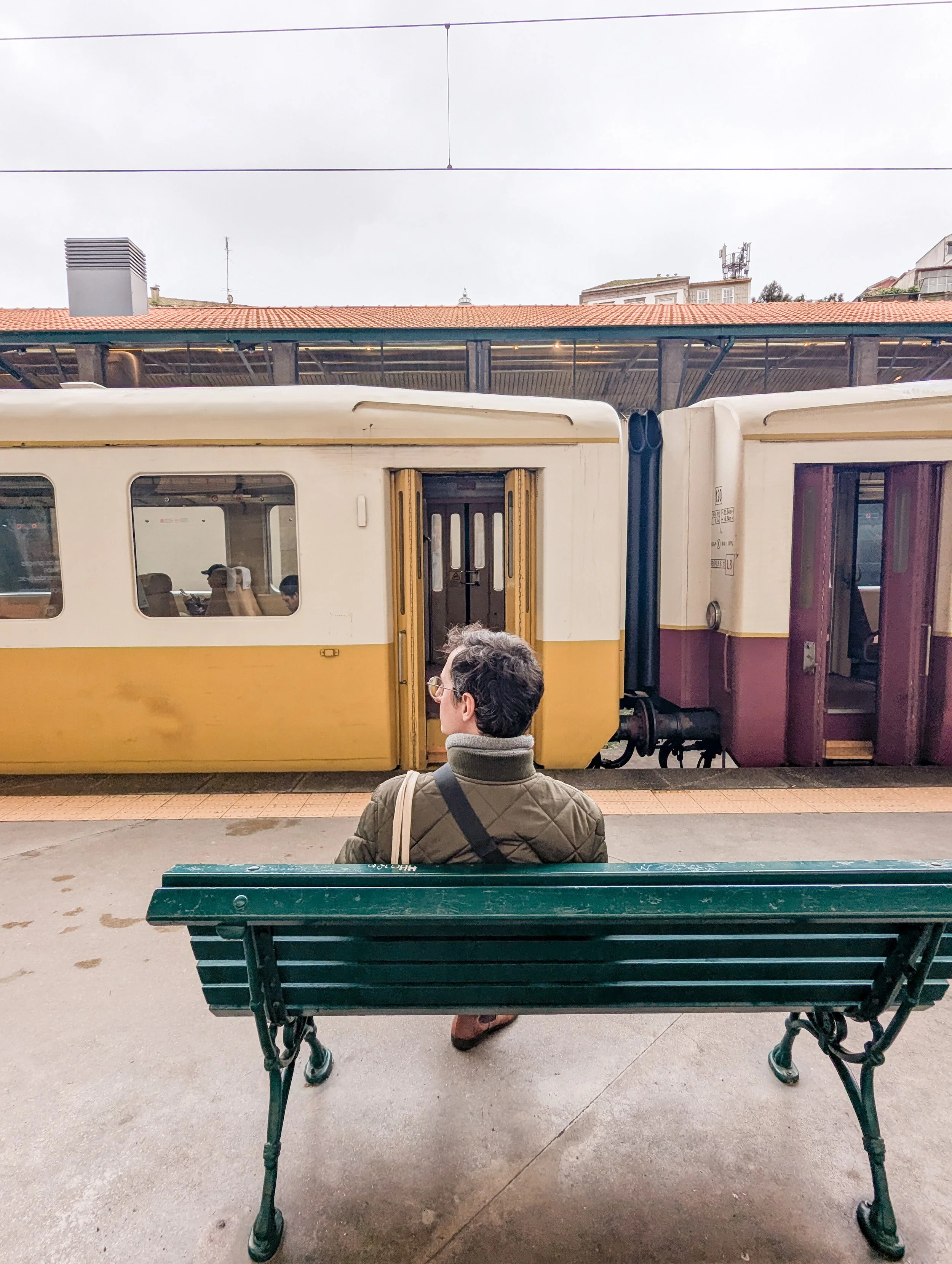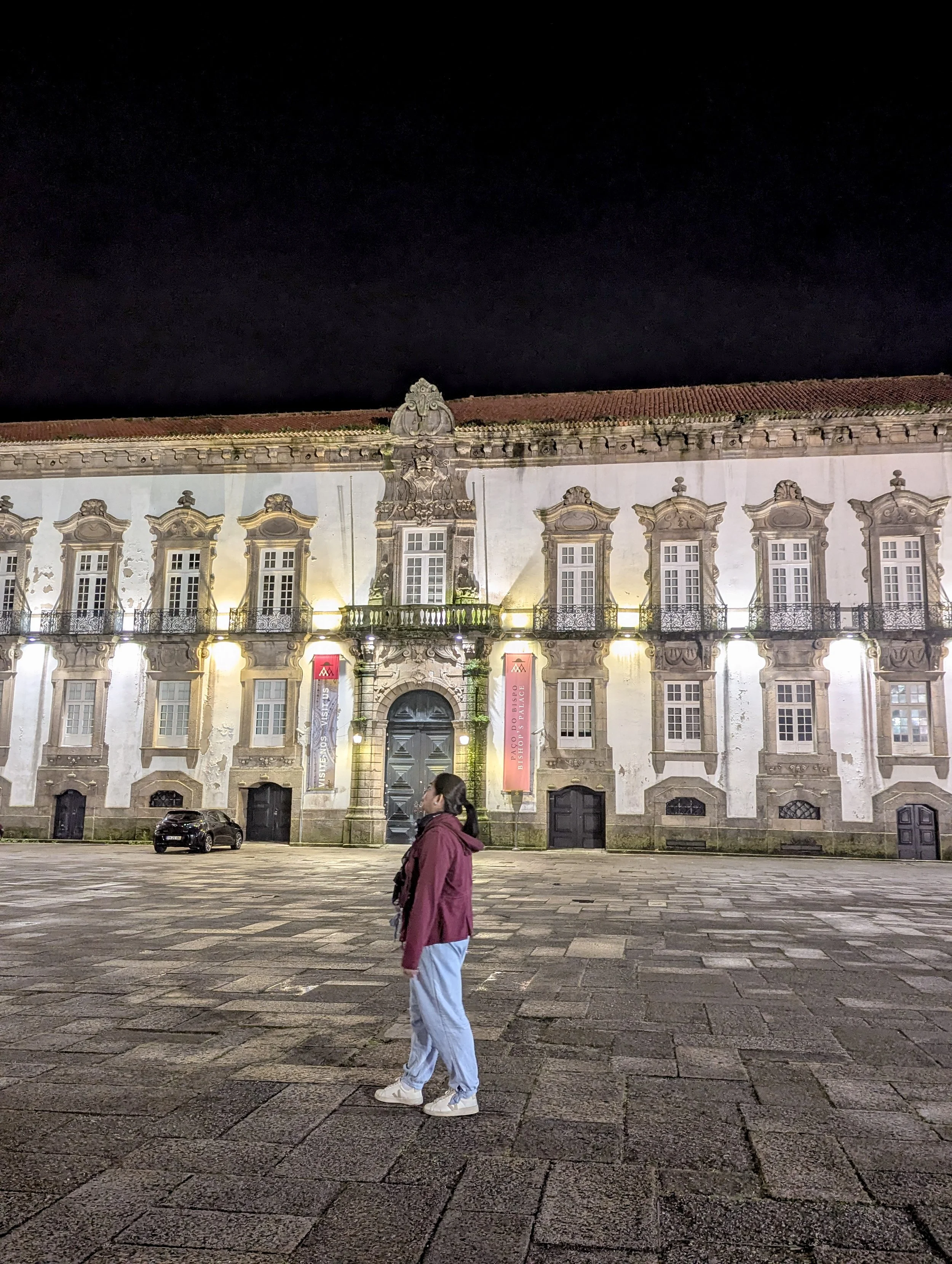Porto, Portugal
There's a thrill in planning a getaway without broadcasting it to the world. Keeping our recent four-day escape to Porto under wraps felt liberating, like a personal adventure free from external expectations.
Porto holds a special place in my heart not just because I first visited it alone in the spring of 2016, but also because I studied Portuguese formally through a summer course at Universidade do Porto (albeit online). Returning this time with B, with a better grasp of the language and a deeper appreciation for Portugal, felt like completing a journey I had started years ago.
Getting There
We opted for a convenient flight with Transavia from Paris Orly airport, landing smoothly at Porto's Francisco Sá Carneiro Airport. Navigating from the airport to the city center was a breeze. We purchased reloadable Andante cards and selected the Z4 zone for our journey. The metro system is straightforward. It takes around 45 minutes to reach Trinidade station where you can make most of the connections to your destination.
Getting Around
Porto's charm is best experienced on foot, even if its steep hills can be a workout. The city's layout quickly became familiar, perhaps because it resembled Lisbon and certain Brazilian cities I’ve previously visited, perhaps thanks to Google Maps (though I find that some information on opening hours is unreliable), or maybe Porto is naturally easy to navigate. The metro was a reliable alternative for occasional further trips, longer distances, or when our legs needed a break. The Andante card made hopping on and off public transport hassle-free. Buses were also a good option.
However, there was an annoyingly disruptive project for the new pink metro line in the city center.
I get that cities need to grow and evolve. I’m all for it, especially for public transportation! However they could definitely do better when it comes to minimizing the noise and chaos. It made me appreciate how in Paris, most of the construction work is discreet and tidy. I know Parisians might roll their eyes at that, but trust me, the French have it easy in that department.
Porto’s reality
Wandering through Porto is like stepping into a living museum. We went on an evening walking tour booked through Freetour.com, which spanned 2.5 hours of immersive storytelling. Starting at Igreja de Santissima Trindade, we crossed the iconic Dom Luís I Bridge into Vila Nova de Gaia, famed for its wine cellars, and concluded in the vibrant Ribeira district. It was an immersive experience, one that highlighted not only Porto's rich history but also its present-day struggles. As we roamed the city, it was hard not to notice the many buildings in ruin, with construction projects underway everywhere. At the same time, it felt as though the city was slowly losing its local spirit, replaced by a growing number of temporary visitors.
The surge in tourism and foreign property investments has gradually edged locals out of the city center, pushing them to suburbs like Matosinhos, Gaia, or Maia. This shift raises questions about the preservation of Porto's authentic spirit and cultural legacy.
Reports and studies have shown that rapid tourism growth in Porto has led to the overexploitation of cultural values and excessive use of urban spaces for tourism purposes, contributing to the erosion of social and economic dynamics in central neighborhoods.
The influx of foreign investment, particularly through programs like Portugal's Golden Visa, has intensified competition in the real estate market, driving up property prices and making it challenging for locals to afford housing in the city center.
Read more: Culture and Tourism in Porto City Centre: Conflicts and (Im)Possible Solutions
As a result, many residents have been compelled to relocate to more affordable suburban areas, leading to a transformation of Porto's historic districts and raising questions about the city's future cultural identity. What will Porto’s future look like in 50 years if the locals are no longer there to carry on the legacy?
Where We Stayed
Our Airbnb was a gem located in the heart of the city, along Rua das Flores, a convenient four-minute walk to São Bento station. The balcony overlooked a tranquil courtyard, offering a serene retreat from the bustling streets. The architecture, reminiscent of my earlier visits to Brazil, added a nostalgic touch. We spent more time than expected in our apartment, especially with the comforts they offered, like coffee and Porto Cruz. The convenience of having a minimarket right at our doorstep meant we could easily stock up on snacks and enjoy cozy & warm evenings indoors, especially when the weather turned drizzly.
Culinary Delights
Porto's culinary scene is a feast for the senses. We indulged in:
Francesinha: A decadent sandwich layered with meats, covered in cheese, and drenched in a rich beer-based sauce.
Pastel de Nata: The iconic custard tart with a perfectly caramelized top.
However, we missed out on:
Bifana: A spicy pork sandwich that's both hearty and flavorful.
Bacalhau: Salted cod prepared in myriad delectable ways.
Maybe next time. One thing’s for sure, Portuguese cuisine is a hearty cuisine. Our guide said it was best enjoyed in eateries where the “old women” cook.
Activities and Sights
Our days were filled with a blend of planned activities and spontaneous adventures:
Wine Tasting at Cálem: We toured the renowned wine cellar, savoring the rich flavors of port wine, and were treated to a soulful fado performance that resonated deep within.
Fado is a traditional style of Portuguese music known for its melancholic yet deeply emotional melodies, often expressing longing or nostalgia. It was traditionally performed in intimate settings like taverns or cafés and accompanied by a singer (fadista) and two main instruments: the Portuguese guitarra (a 12-stringed guitar) and the classical guitar. Over time, it has spread beyond Portugal's borders, but it remains a defining feature of Portuguese musical heritage. Fado was even recognized by UNESCO as an Intangible Cultural Heritage of Humanity in 2011.
The singer’s rendition of Amália Rodrigues’ Uma Casa Portuguesa struck a chord with me, and I couldn’t help but sing along to the classic lyrics.
Uma promessa de beijos
Dois braços à minha esperaÉ uma casa portuguesa com certeza
Lá é com certeza uma casa portuguesaLivraria Lello: This historic bookstore, with its ornate interiors, is a haven for book lovers. The €10 entry fee is redeemable against a purchase, adds a sense of exclusivity to the experience, and for book lovers, it’s tempting to think you’re getting a deal.
However, when I visited this time, I was a little underwhelmed. The selection is mostly classics, and while they do have them in multiple languages, it’s not as varied as you might expect from such a famous bookstore. The €10 discount on a purchase? Well, I realized it’s kind of a trick. They’ve just added the €10 back onto the price of the books, so you’re really paying the full amount, just with the illusion of a deal. Still, for those visiting for the first time, the experience can be worth the line and the fee, if only for the chance to marvel at its beauty. I didn’t remember this being the case back in 2016, so the changes in how they operate were definitely noticeable this time around.
Historic Landmarks: From the intricate azulejos at Capela das Almas to the panoramic views from Clérigos Tower, each site offered a unique glimpse into Porto's past.
Azulejos are those beautiful painted tiles you see all over Portugal, and they’re more than just decoration. They tell stories, keep buildings cool, and protect against moisture. They’ve been around for centuries, influenced by Moorish designs, and have become a huge part of Portugal’s identity. Today, they’re carefully preserved and restored as a key piece of the country’s history.
We spent a lot of time walking around the historical center, just soaking in the sights and ambiance, you know - #slowtravel, along the Calçada Portuguesa.
Calçada Portuguesa, those stunning black-and-white mosaic pavements, that started after the Great Lisbon Earthquake of 1755 when they used the city's ruins to rebuild and decorate the streets, our Porto guide narrates. What began as a practical solution turned into an art form, spreading not just across Portugal but also to Brazil and other former colonies. They’re gorgeous and historic, but let's be real: when it rains, they turn into a slippery, ankle-twisting nightmare (I, for one, should know).
Next time, I plan on taking day trips to nearby cities like Guimarães, Braga, and Aveiro, as well as a cruise down the Douro Valley.
Souvenirs and Memories
Traveling light with just cabin baggage meant we couldn't bring back bottles of Porto wine or boxes of Pasteis de Nata but the memories were souvenir enough (quite literally, non?). B and I briefly discussed the concept of 'pasalubong' (a Filipino tradition of bringing home gifts), and how it’s an intriguing and debatable practice.
In the end, we picked up a couple of books from Livraria Lello, a craft ring from a street artist, and a Portuguese book at the airport. I almost splurged on perfume, but when it was time to board, I saved myself 60 EUR! And need I mention postcards made of cork?
It’s worth noting is that Portugal is the world’s top cork producer, and you’ll see it everywhere from wine stoppers to bags, hats, and even postcards. The country’s cork industry has been going strong for centuries, thanks to its vast cork oak forests, and it’s all super sustainable since the trees aren’t cut down, just carefully harvested. No wonder every souvenir shop is packed with cork-covered everything!
Looking back, I’m grateful for this trip. Despite a few bumps along the way, it was a great escape. Those bumps are what make it a great story to tell anyway! I most especially enjoyed being able to communicate in Portuguese, even if it was just for a brief chat. It was also nice to have a few moments of reflection, like when I was mistakenly identified as Brazilian, a huge compliment! It happened when a local worker at the metro station approached me to help with the ticket machines. He initially started speaking in English, but while I was working on the machine I initially set in French for Be, and the machine reset in Portuguese, I instinctively answered him in Portuguese. That moment was one of those small wins where I felt proud of my progress with the language.
Aside from the language stuff, there were a few things that stood out during our stay. First off, most stores, traditional Portuguese restaurants, and canteens are closed on Sundays, giving the city a more laid-back vibe - something tourists should anticipate. It also made me appreciate the local coffee shops and bakeries which fortunately were open on Sundays! They’re everywhere, and they make you feel like you could just live here, especially if you live that hippy lifestyle. We also spotted an Açai snack bar, of course we had to go!
Every corner seemed to have the scent of freshly baked goods and that perfect coffee. Honestly, it got me thinking: could I see myself living here? The pace and lifestyle feel right, and the cost of living is much cheaper than in France, especially when it comes to food and services.
That being said, I do have to keep in mind the reality of the Portuguese economy. While Porto's charm and lifestyle might suit me, it's not always the most practical. If I consider my long-term stability, I don’t think it’s something that could work just yet. Plus, with my foot injury situation, walking those steep hills every day could quickly become a dealbreaker! But honestly, it’s a lovely city that I’d love to keep coming back to, even if it’s just for a short getaway.
Porto is a beautiful city that I can’t stop thinking about. I’d love to return, and next time, I’ll make sure to dive deeper into the museums and parks I missed this time around. And who knows, maybe I’ll finally make those day trips to Guimaraes, Braga, or Aveiro, or even experience a Douro Valley cruise. But for now, Porto has earned a bigger place in my heart, and it’s definitely a destination I’ll keep going back to.





A reflective journey through the evolution of travel, exploring how my travel approach has changed over the years: from rigid planning driven by guilt and responsibility to embracing a more relaxed, intentional style. Dives into the shifting priorities of choosing where to go, emphasizing curiosity over budget and the desire to connect with places on a deeper level.